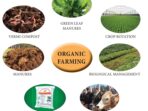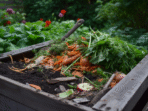Organic Farming vs Conventional Farming Key Differences takes center stage, as we embark on a leafy adventure down the agricultural rabbit hole! Ever wondered whether your kale is giving a hug to Mother Earth or if it’s just full of synthetic surprises? Buckle up, because we’re diving into the green arena where soil health and chemical warfare collide, and the veggies get to choose their side!
The debate between organic and conventional farming isn’t just about what ends up on your plate; it’s about the very philosophy of how we interact with our planet. Organic farming champions natural processes and biodiversity while conventional farming often relies on high-tech interventions and chemical inputs. This dynamic duo has captivated the hearts of eco-warriors and skeptics alike, making the agricultural landscape a colorful battlefield of methodologies and beliefs!
Ah, socks! The unsung heroes of our wardrobe, the silent companions of our feet, the little fabric shields that keep our toes warm and toasty. They are the unsung champions of comfort, the wizards of warmth, and yet they often find themselves at the bottom of the fashion totem pole. Today, dear readers, we embark on an epic quest to unravel the mysteries of these foot-hugging wonders.
Buckle up (or rather, buckle your socks) as we journey into the cotton abyss!
The Sock Origins: A Brief History of Footy Fashion
Once upon a time, in a land far, far away (or in the Stone Age, to be more accurate), humans walked around barefoot, feeling the earth beneath their feet like a nature-loving hippie. This was all good and dandy until winter came knocking, and suddenly, the toes began to freeze. Enter the sock! The first of its kind was made from animal hides and, let’s be honest, looked about as fashionable as a potato sack.
But hey, necessity is the mother of invention, right?
Fast forward a few millennia, and socks have been woven from many materials ranging from wool to silk to that mysterious blend of “what on earth is this?” fabric that sometimes appears in discount bins. We’ve seen them evolve into the funky, outrageous, and downright quirky designs we have today. Who would have thought that a simple piece of fabric could become a canvas for such creative expression?
The Curious Case of the Missing Sock
One cannot discuss socks without addressing the elephant in the room, or rather the sock in the laundry basket: the infamous case of the missing sock. You know the scenario. You wash your socks, and they come out like a magician’s assistant—one vanishing into thin air, leaving its partner alone and confused. Where does it go? Did it join a sock rebellion?
Is there a sock dimension where all lost socks go to live in peace?
Some scientists believe that washers are like black holes for socks, sucking them into an alternate universe where they sip tea with other lost laundry items. Others suspect a secret society of mismatched socks is at work, plotting their escape from the mundane life of foot coverage. Regardless of the reason, this phenomenon is a tragedy that has left humanity in despair.
Remember to always hold your socks close and never take them for granted.
Sock Fashion: From the Catwalk to the Couch
Gone are the days when socks simply served the utilitarian purpose of keeping our feet warm. Today, they are the pièce de résistance of any outfit. Need a pop of color? Grab those neon green polka-dot socks! Want to channel your inner rebel? Slip into those skull and crossbones socks! Socks have transcended their basic functionality and become the veritable cherry on top of the fashion sundae.
The rise of “sock culture” has led to the emergence of sock boutiques, where aspiring fashionistas can curate their sock collections like they’re rare Pokémon cards. We’ve seen the likes of patterned socks, ankle socks, knee-highs, and even toe socks (yes, they exist, and yes, they look like gloves for your feet). The world has finally recognized that socks can be both functional and fabulous.
The Sock Drawer: A Treasure Trove of Memories: Organic Farming Vs Conventional Farming Key Differences
Let’s take a moment to consider the sock drawer. This seemingly innocent piece of furniture is a veritable time capsule filled with memories. Each pair tells a story. There’s the pair from that unforgettable trip to the beach where you got sand in every crevice of your footwear. There’s the lucky sock that somehow always finds its way onto your feet during important job interviews.
And, of course, there’s the mismatched sock, the rebel without a cause, that reminds you of the time you lost a bet and had to wear them in public.
Opening your sock drawer can feel like stepping into a nostalgic trip down memory lane. Each sock is a little chapter in the book of your life, filled with laughter, mishaps, and the occasional awkward moment. Who knew that such a simple article of clothing could evoke such deep emotional connections?
The Sock Gift Dilemma: To Gift or Not to Gift
Let’s address another critical topic: gifting socks. Ah, the classic “I couldn’t think of anything else” gift. It’s a double-edged sword, really. On the one hand, socks can be practical and useful—who wouldn’t want a fresh pair of cozy socks? But on the other hand, they can also be seen as the gift of “I don’t know you well enough to gift you anything meaningful.”
If you’re considering gifting socks, here are a few tips:
- Choose wisely: Ensure that the socks reflect the recipient’s personality. If they love cats, for the love of all things fuzzy, avoid the ones with hot dogs on them.
- Make it fun: Opt for quirky designs that spark joy, like socks with pizza or dinosaurs on them. This way, they’ll appreciate the humor, even if they end up in the “gift that keeps on giving” pile.
- Presentation is key: Wrap them in a fancy box, add a bow, and write a heartfelt note. Suddenly, those socks transform from a mundane gift into a thoughtful gesture.
The Inexplicable Joy of Sock Puppets
There’s something magical about turning a humble sock into a puppet. Perhaps it’s the sheer silliness of it all or the ability to unleash your inner child. Sock puppets have been around for centuries, entertaining people of all ages with their goofy grins and exaggerated personalities. You can create anything—a wise old man, a flamboyant diva, or even a dinosaur that sings show tunes!
Perfect for kids’ parties, educational activities, or just a rainy day at home, sock puppets provide endless entertainment. Just don’t be surprised if they start demanding their own social media presence. Who knew a simple sock could become an online sensation?
The Sock Revolution: Embrace Your Inner Sock Enthusiast
As we wrap up this sock odyssey, let us take a moment to appreciate the impact socks have on our lives. They are more than just fabric tubes for our feet; they are symbols of warmth, comfort, and individuality. So, embrace your inner sock enthusiast! Celebrate mismatched pairs, collect funky designs, and don’t be afraid to wear those wild patterns with pride.
In conclusion, if you ever find yourself doubting the significance of socks, just remember: they’ve been around for thousands of years, they keep our feet warm, and they’ve inspired countless puppet shows. So next time you slide into your favorite pair of socks, take a moment to revel in their magic. They may just be a piece of fabric, but they are also the silent champions of our everyday adventures!
Query Resolution
What are the environmental impacts of organic farming?
Organic farming typically promotes biodiversity, improves soil health, and reduces pollution from chemicals, making it more environmentally friendly than conventional methods.
Is organic food more nutritious than conventional food?

The nutritional differences between organic and conventional foods are often minimal, though some studies suggest organic foods may have higher antioxidant levels.
How do costs compare between organic and conventional farming?
Organic farming usually incurs higher costs due to labor-intensive practices and stricter regulations, which can lead to higher prices for organic produce.
Can conventional farming be sustainable?
Yes, conventional farming can adopt sustainable practices, such as crop rotation and reduced pesticide use, but it often depends on the farmer’s approach and commitment.
Do organic farms use pesticides?
Yes, organic farms can use natural pesticides, but they must adhere to strict regulations limiting the types and quantities used, unlike conventional farms.




